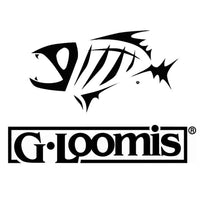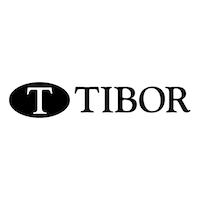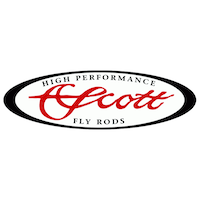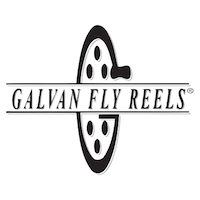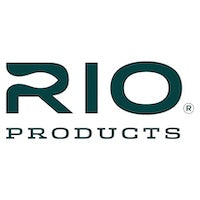First Cast to First Fish: Part 1 - The Basics
What is Fly Fishing?
 It can easily be argued that there is no better way to spend a day than in, on, or around the water casting a fly rod and trying to fool a fish into eating a fly. With the right resources, getting started is not difficult and yet there’s so much to learn and enjoy that you can easily spend the rest of your life improving your skills and knowledge. This guide is intended to help you through the beginning stages, from deciding that you want to give fly fishing a try to landing your first fish. As our shop is located in Florida, most of our fishing is for warmwater and saltwater fish, like bluegill, largemouth bass, redfish, snook and tarpon. We will focus on information for these fish, but much of the information can be applied to the fishing you will find in more temperate areas. We encourage you to get in touch with us if we can help you through the process.
It can easily be argued that there is no better way to spend a day than in, on, or around the water casting a fly rod and trying to fool a fish into eating a fly. With the right resources, getting started is not difficult and yet there’s so much to learn and enjoy that you can easily spend the rest of your life improving your skills and knowledge. This guide is intended to help you through the beginning stages, from deciding that you want to give fly fishing a try to landing your first fish. As our shop is located in Florida, most of our fishing is for warmwater and saltwater fish, like bluegill, largemouth bass, redfish, snook and tarpon. We will focus on information for these fish, but much of the information can be applied to the fishing you will find in more temperate areas. We encourage you to get in touch with us if we can help you through the process.
Most people are aware that there are differences between fly fishing and fishing with a casting or spinning rod, but often they have only a vague understanding of these differences. The primary difference is related to the cast and the way in which the hook (fly, bait, lure etc.) is delivered to the fish. With a casting or spinning rod, a heavy lure or bait is attached to the end of a long, lightweight piece of monofilament or braided line. The heavy lure is cast through the air and pulls the lightweight line behind it.
In fly fishing, the opposite is true. The fly is relatively weightless – in most cases much too light to be cast by itself. The fly line, on the other hand, is relatively heavy and provides the weight necessary to bend the rod. When you cast a fly rod, what you are actually casting is the fly line. The fly line pulls the fly along behind it, turning it over at the end to deliver it to the target.
A tapered section of monofilament, called the leader, is used between the end of the thick, easily visible fly line and the fly. It is usually around 9’ long and serves to separate the fly line from the fly to keep from spooking the fish you are trying to catch, and also allows the fly to behave more naturally. The leader can be easily modified or repaired when needed and is often attached to the fly line with a simple loop attachment, making it very easy to replace.
A fly is basically the fly angler’s version of an artificial lure. Made traditionally with fur and feathers, they are now often tied with synthetic materials as well. Flies can be made to imitate virtually any prey item, from the tiniest of insects to fish, shrimp, crabs, frogs, and even small mammals.
If you do not already own an introductory fly fishing book, you may want to consider purchasing one. Such a book will cover the details of equipment and terminology, rigging, knots, reading water, and presenting the fly. It will be a helpful resource when you are getting started and a good reference thereafter. A book or DVD on fly casting would be another helpful addition. It will help you to more fully understand the dynamics of casting and can also help you to learn new techniques and to identify and fix problems. There is some great content available on the internet as well.
Determine Your Expectations
 The first step when you decide to get started is to determine your expectations and make sure they are reasonable. Do you just want to catch fish? Do you want to target a specific species or fish a specific area? Are you planning a trip that will involve fly fishing? Getting a 5 or 6wt rod, going to a local pond, and catching some panfish (bluegill and related species) is an easily attainable goal. If you want to sight fish redfish or chase tarpon down in the Keys, you’ve got a little more work ahead of you. If you are not already an experienced angler, it may make more sense to work at catching some easier, more available local species before moving on to those that are more difficult to catch. Repetition and time on the water is important, and learning to be successful in local water will dramatically improve your overall fly fishing abilities and enjoyment
The first step when you decide to get started is to determine your expectations and make sure they are reasonable. Do you just want to catch fish? Do you want to target a specific species or fish a specific area? Are you planning a trip that will involve fly fishing? Getting a 5 or 6wt rod, going to a local pond, and catching some panfish (bluegill and related species) is an easily attainable goal. If you want to sight fish redfish or chase tarpon down in the Keys, you’ve got a little more work ahead of you. If you are not already an experienced angler, it may make more sense to work at catching some easier, more available local species before moving on to those that are more difficult to catch. Repetition and time on the water is important, and learning to be successful in local water will dramatically improve your overall fly fishing abilities and enjoyment
Take a Lesson
Getting started right is important. When possible, we recommend you take a lesson from a competent instructor even before buying gear. Take a look at our Fly Fishing Instruction page if you are are in the area. Much of the information that may now seem a little confusing will make sense after you have done some basic casting, and you are likely to make a better choice when choosing your first fly fishing outfit.
The best place to find a good instructor will probably be your local fly shop. They will likely either have someone on staff who can give you a lesson or will be able to recommend an instructor. Local fly clubs and the Fly Fishers International listing of certified instructors are other good sources.
If you have a friend who fly fishes, they will be a great resource as you get started and may be able to help you with your cast. Being a good fly caster doesn’t naturally translate into being a good fly casting instructor. Get help from your friends but still consider instruction from someone who regularly teaches others.
The first lesson is often on the grass and focuses on casting. A single hour of instruction is usually all that is needed to figure out the basics and start to develop your cast. After your first lesson you should spend some time practicing on your own, making sure to use proper form. Twenty minutes a day is about right. Practicing on the water is fun, but practicing on the grass, where it is easier to concentrate on form, may be more valuable as you get started. If you get tired or your form falls apart, put the rod down and come back to it later. If you don’t yet have equipment, or don’t have a convenient space outside where you can practice, consider picking up an indoor practice rod. They are relatively inexpensive, excellent learning tools, and fun to cast as well.
A second lesson, a week or two after the first, will address any problems you have developed and help solidify your technique. At this point, if you haven’t already, you need to get some equipment and go fishing.




